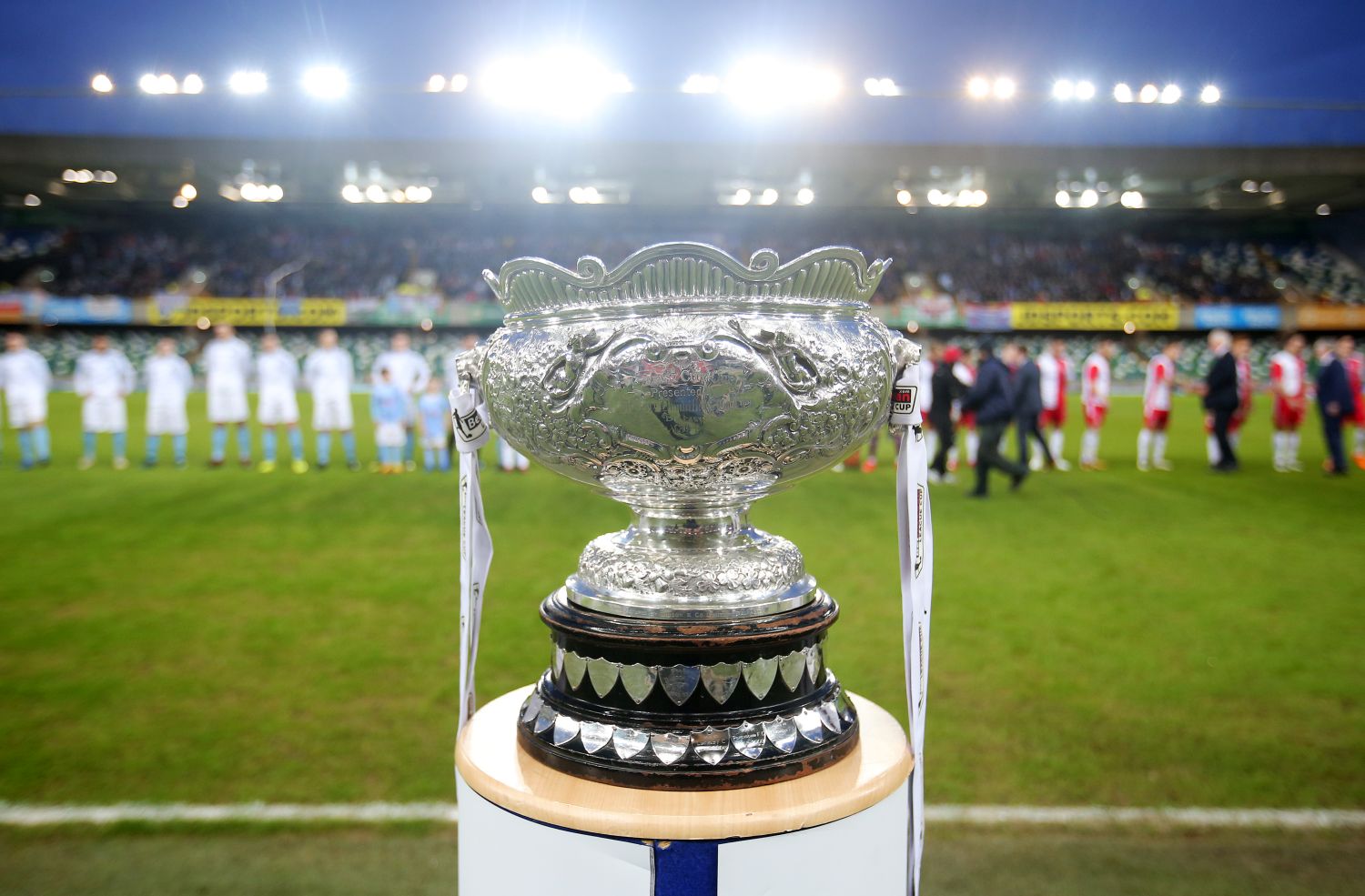League Cup knockout stages have consistently delivered dramatic upsets and thrilling matches throughout the competition’s history. This year is no different, with teams battling for a coveted spot in the final. From analyzing team performance over the past five years to dissecting pivotal matches and highlighting individual player impact, we delve into the intricacies of this high-stakes tournament phase.
This comprehensive analysis explores the evolution of the knockout format, examines key tactical decisions, and showcases the influence of star players. We also present visual representations of data to provide a clearer understanding of team progression and goal-scoring trends throughout the various knockout rounds.
The Evolution of the League Cup Knockout Stage
The League Cup, a prestigious competition in English football, has seen its knockout stage evolve significantly over the years. From its initial format to the modern structure, the competition has undergone several changes, impacting team strategies and fan experiences alike. This analysis explores the historical trajectory of the League Cup knockout stage, highlighting key moments, impactful matches, and the strategic shifts employed by participating teams.
History of the League Cup Knockout Stage Format
The League Cup’s knockout stage has not always been structured as it is today. Early iterations of the competition featured a simpler bracket system, often with fewer teams involved. The introduction of group stages in later years fundamentally altered the knockout phase, lengthening the competition and increasing the number of matches required to reach the final. A timeline showcasing significant changes includes the shift from a straight knockout to the current group stage followed by knockout format, the introduction of two-legged semi-finals in certain periods, and the consistent refinement of the seeding system to ensure a balance of competitiveness.
Notable Upsets and Memorable Matches
The League Cup knockout stage has been the setting for numerous memorable upsets and dramatic matches. These games often redefine the narrative of a season, highlighting the unpredictable nature of cup competitions. Examples include unexpected victories by lower-league teams against established Premier League giants, last-minute goals that decided ties, and penalty shootouts that captivated audiences. These moments are etched in the competition’s history, showcasing the power of cup football to produce unforgettable moments.
| Era | Knockout Stage Format | Number of Teams | Notable Features |
|---|---|---|---|
| Pre-Group Stage (e.g., 1960s-1980s) | Straight knockout from the start | Relatively fewer teams | Simpler draw, fewer matches |
| Post-Group Stage (e.g., 1990s-Present) | Group stage followed by knockout | More teams | Increased competition, longer tournament |
Team Performance in Knockout Stages
Analyzing team performance in the League Cup knockout stages over the past five years reveals interesting trends and strategic approaches. Some teams consistently excel in these high-pressure situations, while others struggle to maintain their form from the league season. This section examines the factors contributing to success in the knockout rounds and the tactical nuances employed by different teams.
Factors Contributing to Knockout Stage Success
- Squad Depth: Teams with a strong bench can effectively rotate players and manage fatigue throughout the competition.
- Tactical Flexibility: Adaptability to different opponents and match situations is crucial for success.
- Mental Fortitude: The ability to handle pressure and perform under intense scrutiny is essential in knockout matches.
- Experience: Teams with a history of success in cup competitions often possess the mental and tactical edge.
Strategic Approaches in Knockout Stages
Teams often employ specific strategies during different stages of the knockout rounds. Early rounds might see rotation of squad members, while later stages demand full commitment and optimized starting lineups. The strategic approaches may involve a shift from a possession-based game to a more direct style, depending on the opponent and the importance of the match. The utilization of set-pieces and counter-attacking strategies also becomes crucial in tight knockout encounters.
Tactical Adjustments During Knockout Progression
- Increased defensive solidity as the stakes rise.
- Refined attacking strategies to exploit opponent weaknesses.
- More emphasis on set-piece routines and efficiency.
- Strategic substitutions to maintain momentum or address specific threats.
Impact of Specific Matches on League Cup Knockout Stages

Certain high-profile League Cup knockout matches have had a lasting impact on the participating teams’ seasons. A victory or defeat can significantly influence a team’s confidence, momentum, and even their overall league standing. This section examines a pivotal knockout game, analyzing its consequences and the tactical decisions that shaped its outcome.
The Long-Term Impact of a Pivotal Knockout Match
For example, consider a hypothetical match between Manchester City and Liverpool in a semi-final. A surprising Liverpool victory could boost their morale significantly, impacting their performance in subsequent league matches and potentially shifting the dynamics of the title race. Conversely, a defeat could affect City’s confidence, creating ripple effects across their season. The psychological impact of such a game often outweighs its immediate result.
Tactical Decisions and Consequences
In the hypothetical Manchester City-Liverpool game, a decision by Liverpool’s manager to employ a high-pressing strategy could prove crucial. If successful, it could disrupt City’s possession game, leading to turnovers and scoring opportunities. Conversely, a failure to execute this strategy effectively could leave Liverpool vulnerable to City’s counter-attacks. The consequences of such tactical choices can be far-reaching.
The match unfolded dramatically. Liverpool’s early high press yielded a goal within the first 15 minutes. Manchester City responded with increased possession, but Liverpool’s resolute defense held firm. A late goal by Liverpool sealed the victory, sending shockwaves through the football world and significantly impacting both teams’ seasons.
The Role of Individual Players in Knockout Success
Individual brilliance often plays a decisive role in League Cup knockout matches. Certain players consistently elevate their performance in high-stakes situations, making a significant contribution to their team’s success. This section highlights the impact of key players and memorable individual performances.
Impact of Key Players
Players known for their composure under pressure, ability to deliver in crucial moments, and match-winning qualities often become pivotal figures in knockout competitions. Their performances can inspire their teammates and demoralize opponents, contributing significantly to the outcome of a match. Many examples exist of players who have scored crucial goals or provided game-changing assists in League Cup knockout games, becoming instant heroes.
| Player | Team | Season | Notable Contribution |
|---|---|---|---|
| [Player Name 1] | [Team Name 1] | [Season] | [Description of contribution] |
| [Player Name 2] | [Team Name 2] | [Season] | [Description of contribution] |
Visual Representation of Knockout Stage Data
Visual representations are effective tools for conveying complex data in an easily digestible format. This section describes two visual representations that could effectively illustrate data related to the League Cup knockout stages.
Visualizing Team Progression
A bracket-style diagram could effectively visualize the progression of teams through a specific League Cup knockout stage. Each team would be represented by a node, with connecting lines indicating wins and losses. The size of the nodes could correspond to the team’s ranking or seed, providing a visual representation of the competition’s hierarchy. The diagram would clearly show the path each team took, highlighting upsets and dominant performances.
Visualizing Goals Scored per Round

A bar chart could illustrate the number of goals scored in each round of the knockout stage over a specific period. The x-axis would represent the different rounds (e.g., Round of 32, Round of 16, Quarter-finals, etc.), while the y-axis would represent the total number of goals scored. Different colored bars could represent different seasons, allowing for a comparison of scoring trends over time.
This visual would highlight whether scoring rates increase or decrease as the competition progresses.
Check division one league table zimbabwe pdf to inspect complete evaluations and testimonials from users.
The League Cup knockout stage remains a captivating spectacle, showcasing the unpredictable nature of football and the relentless pursuit of glory. Analyzing past successes and strategic approaches offers valuable insight for both players and fans alike. As the competition progresses, the intensity and drama only heighten, making each match a crucial battle in the fight for the coveted trophy.

